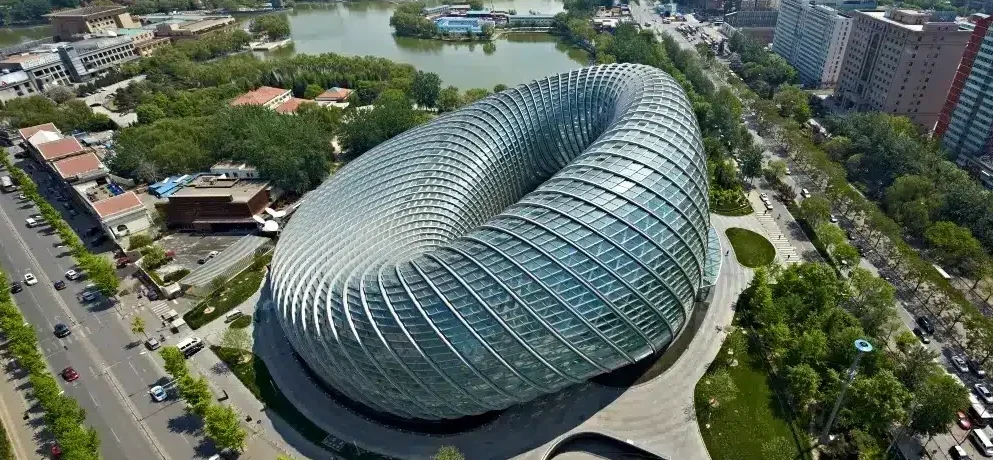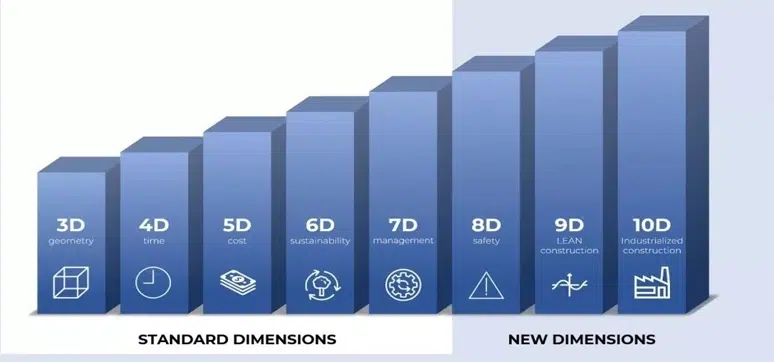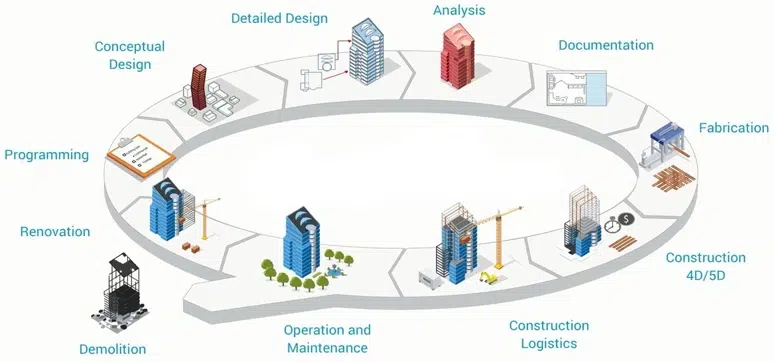Understanding BIM
At its core, BIM is a collaborative process that enables architects and stakeholders to create and manage digital representations of the physical and functional characteristics of places. Unlike traditional 2D drawings, BIM models are rich in information, containing not only geometric data but also material properties, spatial relationships, and more. This comprehensive approach allows for a more holistic understanding of a building throughout its lifecycle.
Over the years, the adoption of BIM in architecture and façade design has undergone a remarkable evolution. Initially perceived as a novel concept, BIM has now become a standard practice, revolutionising workflows and methodologies within the industry. From conceptualisation to construction, BIM’s seamless integration has enhanced collaboration, efficiency, and accuracy in project execution.
Significant Advantages of BIM
In my experience, the most significant advantages of utilising BIM in architectural and façade projects are manifold. Firstly, BIM facilitates comprehensive visualisation, enabling stakeholders to explore designs in a virtual environment before physical construction commences. Additionally, BIM enhances coordination among multidisciplinary teams, reducing errors, minimising rework, and ultimately accelerating project timelines.
BIM fosters collaboration and coordination among project stakeholders like never before. By working on a shared digital platform, architects, engineers, contractors, and clients can seamlessly exchange information, coordinate tasks, and resolve conflicts in real-time. This integrated approach promotes transparency, accountability, and alignment of project goals, leading to smoother project delivery and improved outcomes.
Benefits of BIM in Façade Design:
![]() The implementation of BIM and parametric processes in façade design offers a multitude of benefits. By leveraging BIM, architects, and designers can optimise façade performance, enhance sustainability, and achieve intricate geometries that were once deemed unattainable. Parametric modeling enables the exploration of design variations swiftly, empowering architects to push the boundaries of creativity while maintaining structural integrity.
The implementation of BIM and parametric processes in façade design offers a multitude of benefits. By leveraging BIM, architects, and designers can optimise façade performance, enhance sustainability, and achieve intricate geometries that were once deemed unattainable. Parametric modeling enables the exploration of design variations swiftly, empowering architects to push the boundaries of creativity while maintaining structural integrity.
BIM has emerged as a fundamental tool in contemporary architectural design, offering architects unparalleled capabilities to streamline complex façade designs.
Through parametric modeling, architects can explore intricate geometries, analyse performance metrics, and iterate designs with precision. By integrating BIM into their workflows, architects can unlock new possibilities, enhance collaboration, and realise their creative vision with greater efficiency and accuracy.
\Integration with Emerging Technologies:
The convergence of BIM with emerging technologies like augmented reality (AR) and virtual reality (VR) presents exciting possibilities for architectural and façade design. These immersive technologies enable stakeholders to experience designs firsthand, facilitating real-time feedback and decision-making. By integrating AR and VR into the BIM workflow, designers can enhance client engagement, foster innovation, and improve project outcomes.
Contributions to Sustainable Design:
BIM plays a pivotal role in advancing sustainable design practices, particularly concerning façade materials and energy efficiency. By simulating environmental performance metrics within the BIM environment, architects can optimise building envelopes to minimise energy consumption, maximise natural light penetration, & mitigate environmental impact. Furthermore, BIM facilitates lifecycle analysis, enabling designers to make informed decisions regarding material selection and building operation.
Utilising Technology for Cost Reduction and Design Improvement:
When we create an information model to which we can now also add programming data for different components that, in turn, generate more precise program data for this project in question. This is 4D BIM. But when an accurate estimate of the costs of the components given in the information model is produced, we are talking about one more level, the 5D BIM.
One of the many advantages of working in 5D BIM is the ability to estimate the cost of the model itself so that any changes to its design will be reflected in the budget. BIM Technology plays a crucial role in reducing costs, minimising defects, and enhancing designs within the BIM framework. Through automation, architects can optimise repetitive tasks, thereby reducing labour costs and improving overall project efficiency. Furthermore, digital fabrication techniques enabled by BIM facilitate precision manufacturing, minimising material waste and enhancing construction quality.
Lifecycle Management and Facility Operations:
Beyond design and construction, BIM offers valuable insights for facility management and operations. By capturing and organising building data in a digital format, BIM enables owners and facility managers to effectively manage assets, plan maintenance activities, and optimise space utilisation. This data-driven approach enhances building performance, prolongs lifespan, and ensures a seamless transition from construction to occupancy. Meeting Customer Demands through 3D Parametric Modeling:
In today’s dynamic market, customer demands for bespoke designs and rapid iterations are ever-increasing. 3D parametric modeling and automation offer a powerful solution to meet these demands. By leveraging parametric tools, architects can efficiently iterate through design variations, tailor solutions to client preferences, and deliver personalised experiences that resonate with end-users.
Conclusion:
In conclusion, the adoption of BIM represents a paradigm shift in how architecture and façade design are conceptualised, executed, and experienced. By embracing BIM’s transformative potential, architects can navigate the complexities of modern design challenges, elevate project outcomes, and shape the built environment for generations to come. As we continue to push the boundaries of innovation, BIM remains at the forefront, empowering architects to craft virtual realities that inspire, engage, and endure.
















